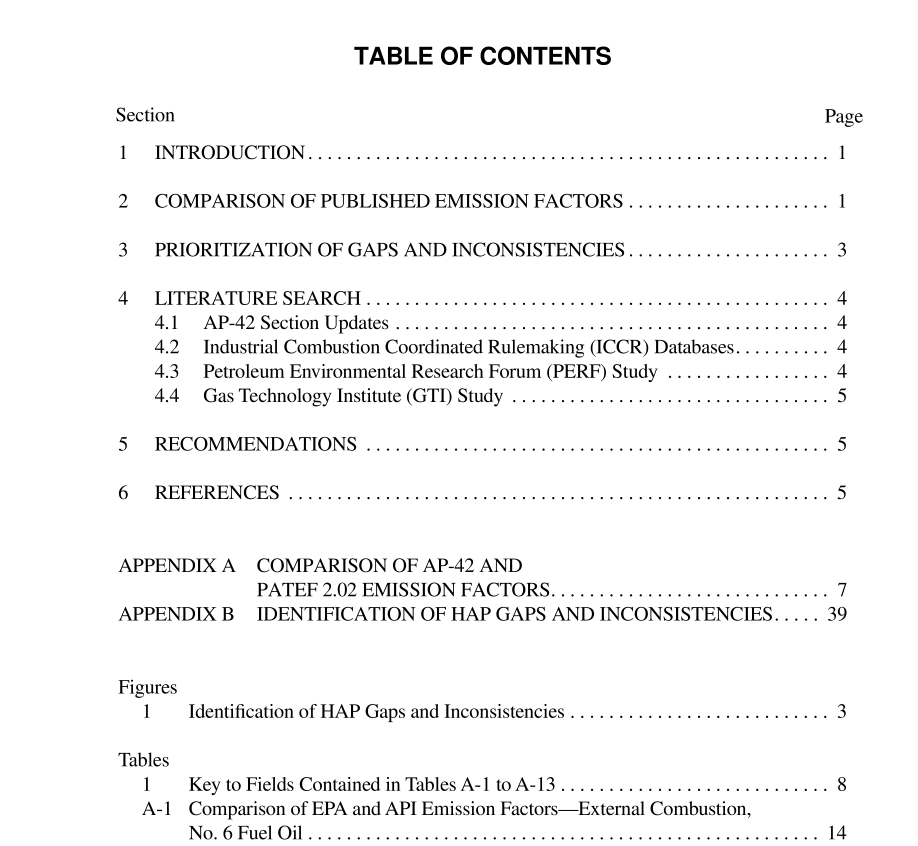API Publ 4720 pdf download

API Publ 4720 pdf download.Comparison of API and EPA Toxic Air Pollutant Emission Factors for Combustion Sources
2 COMPARISON OF PUBLISHED EMISSION FACTORS
The two primary sources of published emission factors for air toxics from combustion processes are the EPA’s AP-42 document and the API’s Petroleum Air Toxics Emission Factors (PATEF) database. The EPA periodically updates emission factors to incorporate new available test data. The AP-42 emission factors for boilers and heaters were updated in 1998 to include information from the electric utility hazardous air pollutant study. In the summer of 2000, the EPA updated emission factors for gas turbines and gas-fired reciprocating engines based upon information compiled during the Industrial Combustion Coordinated Rulemaking (ICCR) efforts. The API’s PATEF database is based upon tests conducted on petroleum industry sources in California in response to the Air Toxics Hot Spots Information and Assessment Act of 1988.
For each of these 13 source categories, PES prepared a table that compares the API and EPA emission factors. These tables are contained in Appendix A. Each table identifies the chemicals for which emission factors are available, EPA emission factor information, and API emission factor information. Each table is accompanied by a narrative discussion of the gaps and inconsistencies that were found for each source category. Using the data in these 13 tables, PES prepared a color-coded scheme to visually identify data gaps and inconsistencies using the following indicators: • A green code indicates that the emission factors are of reasonable quality and there is consistency between the EPA and API databases. The specific criteria are that either the API or EPA emission factor has a data quality rating of A (excellent), B (above average), or C (average), and there is good agreement (within a factor of 5) between the EPA and API factor.• A yellow code indicates some concern about the quality of the emission factors, either because of inconsistencies between the EPA and API factor or because of a small data set. The specific criteria are: (1) either the API or EPA emission factor had a data quality rating of A, B, or C, but there is disagreement {greater than a factor of 5} between the EPA and API factor; or (2) the emission factor had a data quality rating of D {below average} and there is good agreement {within a factor of 5} between the EPA and API factor. • A red code indicates the emission factors are of poor quality or based on a single test. The specific criteria are: (1) the emission factor had a data quality rating of D, but there is disagreement {greater than a factor of 5} between the EPA and API factor; or (2) the emission factor had a data quality rating of E {poor}. • A gray code indicates that there is no emission factor available from either EPA or API. Detailed graphical summaries of gaps and inconsistencies for each source category and pollutant are presented in Appendix B. Figure 1 summarizes the information in Appendix B by assigning a single color code for each source and pollutant category. Major gaps in air toxic emission factors for combustion sources include: • A lack of data for dioxin/furan emissions for most source categories. This gap may be important because EPA’s Per- sistent Bioaccumulative Toxic regulation is focusing attention on these chemicals. The reporting threshold for the dioxin and dioxin-like compounds is 0.1 grams per year. While the relative potential for dioxin emissions from gas- fired heaters is generally considered very low, the industry needs a reasonable and defensible position regarding their potential to emit dioxin. • A lack of data for metals emissions for reciprocating internal combustion engines (RICE) and gas-fired gas turbines. While it is likely that metal emissions from these sources are small, there are no published emission factors to con- firm this assumption.









